Jerry Bruckheimer’s 7-Step Formula for ‘Top Gun: Maverick’ Is Worth Hollywood’s Attention
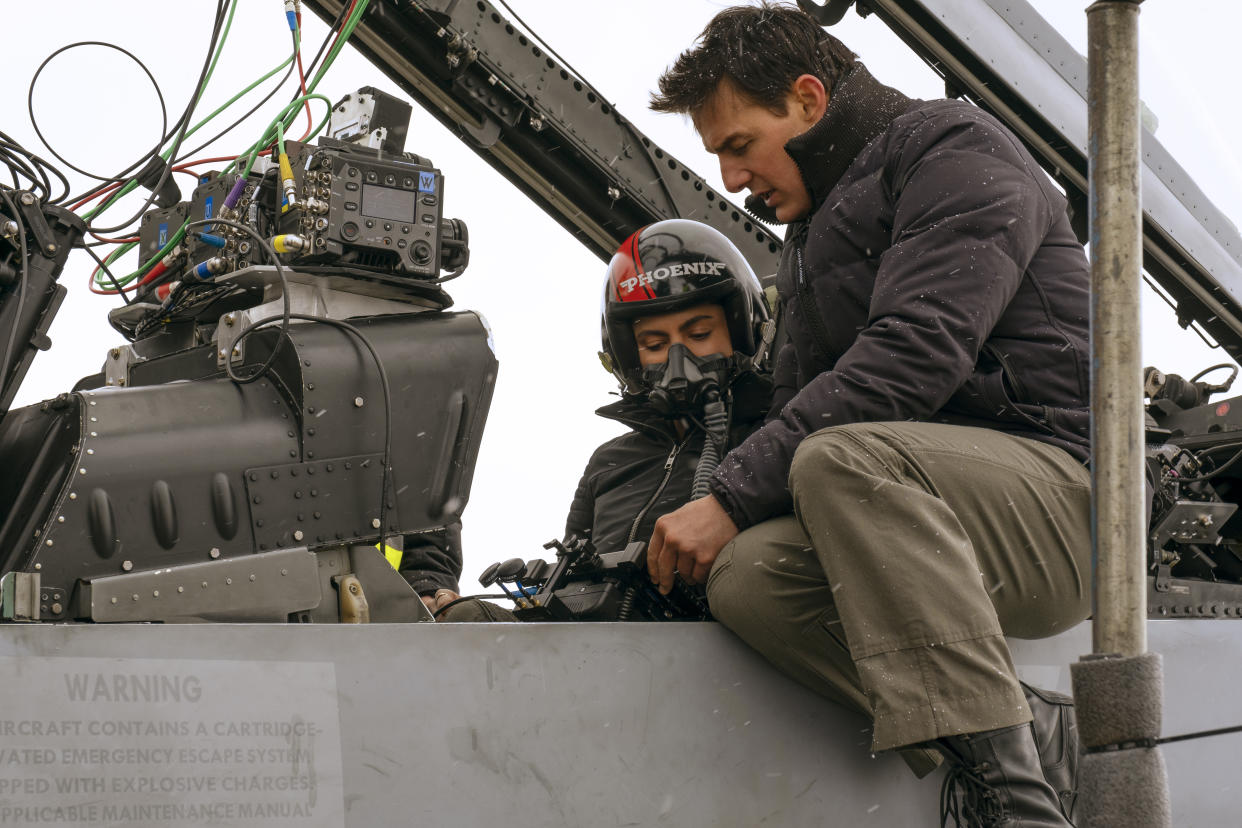
- Oops!Something went wrong.Please try again later.
- Oops!Something went wrong.Please try again later.
- Oops!Something went wrong.Please try again later.
- Oops!Something went wrong.Please try again later.
Jerry Bruckheimer has seen it all. He remembers the go-go days at Paramount Pictures in the ’80s with his coked-up partner Don Simpson, which yielded the original “Beverly Hills Cop,” “Flashdance” and “Top Gun.” Simpson had incredible story instincts — he invented the “high-concept” movie — and networked Hollywood parties while ex New York ad-man Bruckheimer kept his head screwed on straight and made sure the visually stylish movies were delivered on time and on budget.
On his own in the ’90s and early 2000s, Bruckheimer was cock of the walk at the Disney studio, churning out high-testosterone, actioners from Bruce Willis vehicle “Armageddon” and Nic Cage in “Con Air” and “National Treasure” to Will Smith in “Enemy of the State” and the Johnny Depp “Pirates of the Caribbean” series, which proved that movies could string together VFX-heavy action sequences without worrying about the vagaries of plot. Over the decades Bruckheimer’s movies have ranked him as the third highest-grossing producer worldwide, with $12 billion in total tickets sold.
More from IndieWire
But arguably he also turned out Oscar-caliber fare that just didn’t make it to the Best Picture race, even if some of the players were nominated, including Ridley Scott’s war picture “Black Hawk Down,” submarine actioner “Crimson Tide,” sports saga “Remember the Titans,” and teaching drama “Dangerous Minds.”
“We make films that are big audience pleasers,” said Bruckheimer on the phone. “It’s good to see a brilliant smaller movie capture the Academy’s excellence quota. Sometimes they are not entertaining movies. If you go through the years, how many pictures that are big audience pleasers have won Academy Awards? I’ve never made a movie to make an Academy Award. It’s about entertaining audiences and focusing on people. I take pride in all the people I’ve recognized for the first time and supported to help to make their careers — Eddie Murphy, Tom Cruise, Ben Affleck — all the opportunities and directors I’ve worked with and broken out in our business. It’s working with talented people: you always let the story and the talent carry you. It takes conviction from an executive to back a picture. They have to take on their bosses to make this. That’s what builds careers.”
Clearly, Bruckheimer applied all that he has learned from the ’70s until today for the long-awaited sequel “Top Gun: Maverick,” which earned a Best Picture Oscar slot and with it, Bruckheimer’s first Oscar nomination. He and producer-star Cruise left nothing to chance in taking the time they needed to bring this beloved fighter pilot drama back to the screen. They stuck to their long-held beliefs of what makes a commercial Hollywood crowdpleaser, and insisted on executing their movie at the highest level. Six Oscar nominations are icing on the cake.
“It’s about character, it’s about theme,” said Bruckheimer. “Things that worked so well in the ’70s, ’80s, and ’90s changed so much with the success of comic book heroes. The way of doing business changed in the pandemic. We wanted to bring out a movie purely designed as entertainment. It’s what I’ve been doing my whole career. Tom Cruise felt the same way: when entertaining audiences you hope to get the best story, characters, and scenes, and the best people behind and in front of the camera.”
Check out some of the lessons Bruckheimer applied to “Top Gun: Maverick” to capture global audiences.
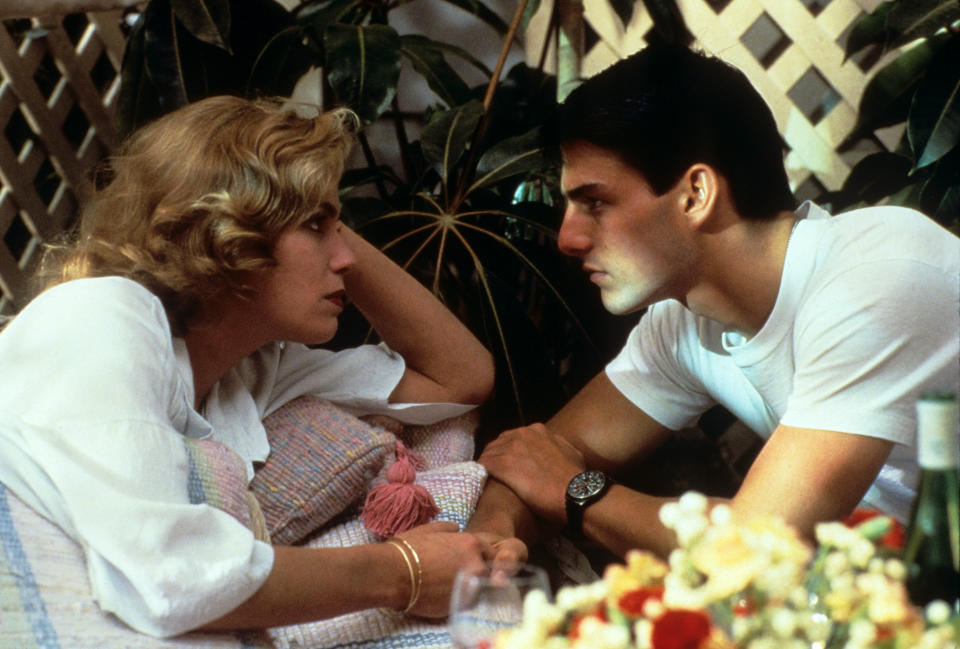
©Paramount/Courtesy Everett Collection / Everett Collection
1. Start with a popular property, and stay true to it.
“‘Top Gun’ was a beloved movie to begin with,” said Bruckheimer. “What happened is that the older generation brought their sons and daughters to see it. When we previewed the movie, it previewed well, but not through the roof. The adults brought the kids who loved it, so it went from 8 to 80 to entertain the audience.”
Cruise was never interested in making a sequel as “a money grab,” said Bruckheimer. “He always wanted to make good movies. He was soaring: ‘Risky Business’ was a seminal moment for his career.” As Cruise moved on to other things, “Top Gun 2” was placed on a back burner for decades, until 2012. “It wasn’t until Tony Scott got involved. We were scouting locations with Tom at a naval base in Nevada on a Friday and lost Tony on Sunday. It was a sad, sad thing.”
Finally, in 2017 Bruckheimer told Cruise he was back developing a “Top Gun” sequel, this time with director Joseph Kosinski, who had directed Cruise in 2013 sci-fi thriller “Oblivion.” Kosinski flew to Paris where Cruise was making “Mission: Impossible — Fallout.” The director pitched Cruise for half an hour (complete with look-book) the story of Pete “Maverick” Mitchell’s return to flight school and the fraught relationship with the late Goose’s son, Rooster. Cruise said: “I’ll do this under one condition. I have to do it practical. It can’t be like the first one, when nobody was prepared.” (On the first film, only Cruise could handle being filmed in an F-16.) Cruise liked the pitch enough to whip out his phone and call Paramount to greenlight the picture.
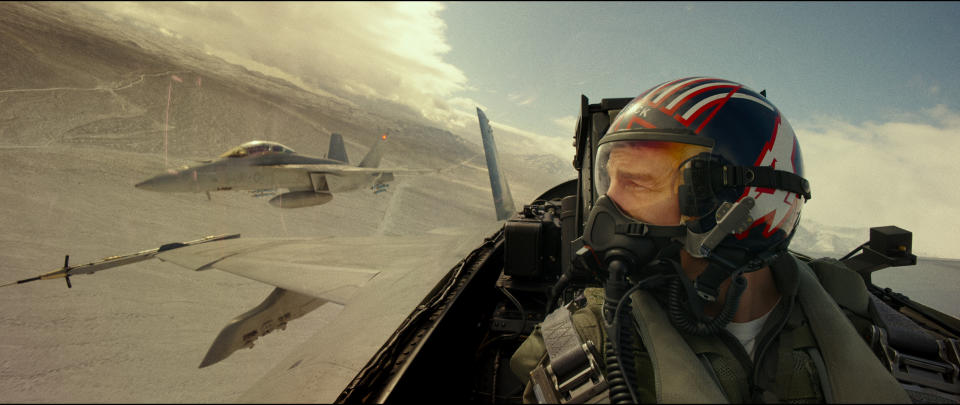
Paramount Pictures
2. Hire strong screenwriters.
Bruckheimer is known for hiring as many expensive writers as he needs to get to where he needs to go. This screenplay required three fresh screenwriters to overhaul the work of Scott’s writer Peter Chang and Justin Marks, who both landed story credits. Ehren Kruger (“Transformers”), who wrote Kosinski’s firefighter thriller “Only the Brave,” started things off, followed by Eric Warren Singer (Oscar-nominated “American Hustle”). Cruise’s “Mission” director, Oscar-winning writer Christopher McQuarrie (“The Usual Suspects”) did the final polish, tailoring each character to the actors they had cast.
The challenge was “how do you take a movie from 35 years ago and give the same audience something fresh and new?” said Bruckheimer. “When audiences went into see ‘Top Gun: Maverick’ their arms were folded: ‘how will you guys make a movie as good as the first one?’ They were very skeptical. But with that first carrier sequence when you hear the music and see the jets taking off, they relaxed and rode with the story. We wanted to capture them.”
3. Pick the right director.
Bruckheimer went to Kosinski with the script, which he honed before they pitched it to Cruise. “Tom had faith in him,” said Bruckheimer. “We felt he was the right person to pull this off, with enough technical expertise: he’s an architect, engineer, and designer. This brought a lot of technical challenges and he worked though it, like six cameras in a cockpit. The engineers in the Navy took a bunch of things out of the F-18 and we got the cameras in there. Thanks to the expertise of our technicians and the Navy, it was unbelievable, but we had no mishaps in those planes. We got a mind-boggling 813 hours of aerial footage and 26 hours of carrier footage. That’s what we had in order to go cut the sequences together.”
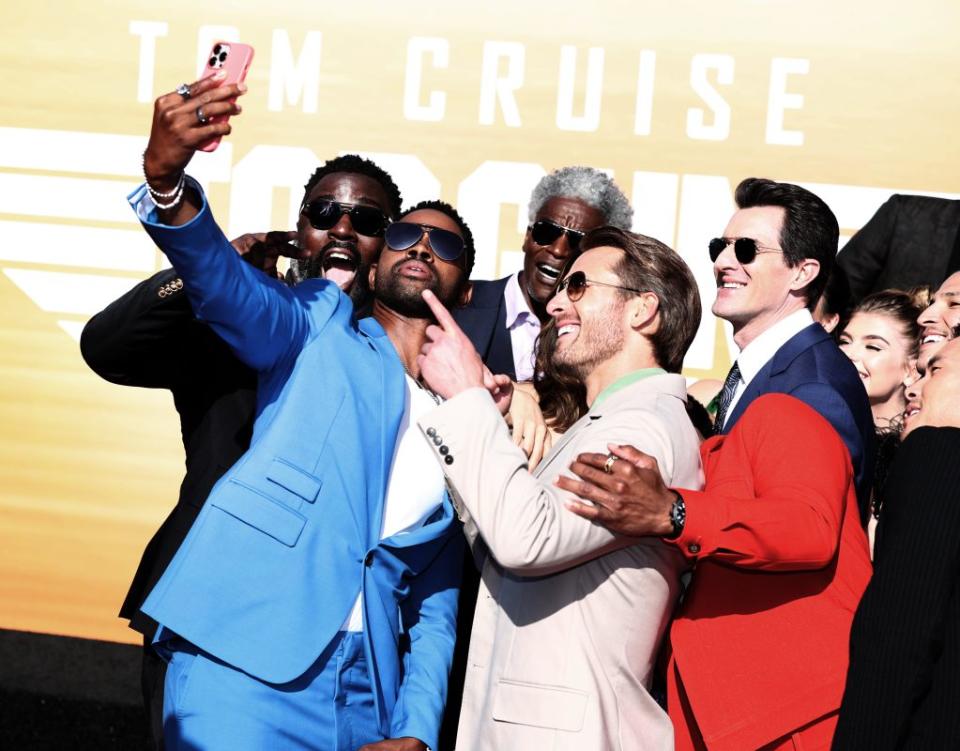
Christopher Polk for Variety
4. Shoot it practical.
This time, the filmmakers designed a system where all the actors were filmed in the planes. That required figuring out “how to prepare them for that,” said Bruckheimer, which involved casting actors who could handle the rigorous months of training. “The actors had to buy into this. We told them this is what you’re going to do: ‘You’ll train in a prop plane, then a jet with more speed, then an F-18 doing five to seven Gs.’ They had to act, turn to the camera, know where the sun is. So many things they had to do that after two hours they couldn’t see what they were doing, the sun was in the wrong place, the lines weren’t right. We went through many trials and tribulations to make it right, but even before they got to that, they did Navy underwater survival in a cage with a blindfold turned upside down. Every one of them did it.”
Monica Barbaro (“Phoenix”) was the only one who didn’t throw up, said Bruckheimer: “We had to show the audience how difficult it was to be in those planes with seven Gs on your neck, on your body, it’s hard to turn your head when you’re upside down. You can’t imagine how difficult it was for the actors, brutal. They all deserve accolades.”
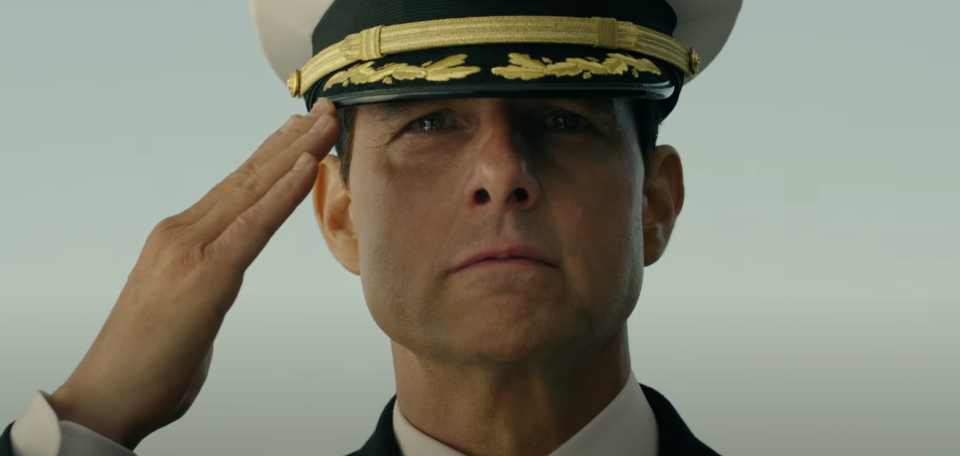
screenshot
5. Build on the characters.
It wasn’t just the technical prowess on display that makes the film work. It’s also the performances of Cruise as Maverick, Miles Teller as Rooster, Val Kilmer as Iceman, and Jennifer Connelly as Maverick’s rekindled past romance Penny. After Cruise insisted on bringing Iceman back, Kilmer figured out how to use his current voice infirmity in the role. And Kosinski eschewed a rehearsal so he could film the emotional reunion of the two actors for the first take. “It was really emotional,” said Bruckheimer. “It brought tears to everyone’s eyes, Tom seeing his old buddy, still handsome but challenged right now.”
For Bruckheimer, “Character is what the story is all about: people wanting to be as good as they can be, Maverick’s struggle to find a family, characters put in stressful situations who strive through training and all the obstacles and trials and tribulations.”
6. Get Lady Gaga to write your song.
Landing Gaga “was a combination of Randy Spendlove [president of motion picture music at Paramount] who had a relationship with Gaga’s management,” said Bruckheimer. “She wrote the song [Oscar-nominated “Hold My Hand,” with Bloodpop]. Randy called Joe and I sat with Randy and Lady Gaga’s people. We were all blown away. Hans [Zimmer] said it was so good that he would use it for the love theme. You hear the melody throughout.”
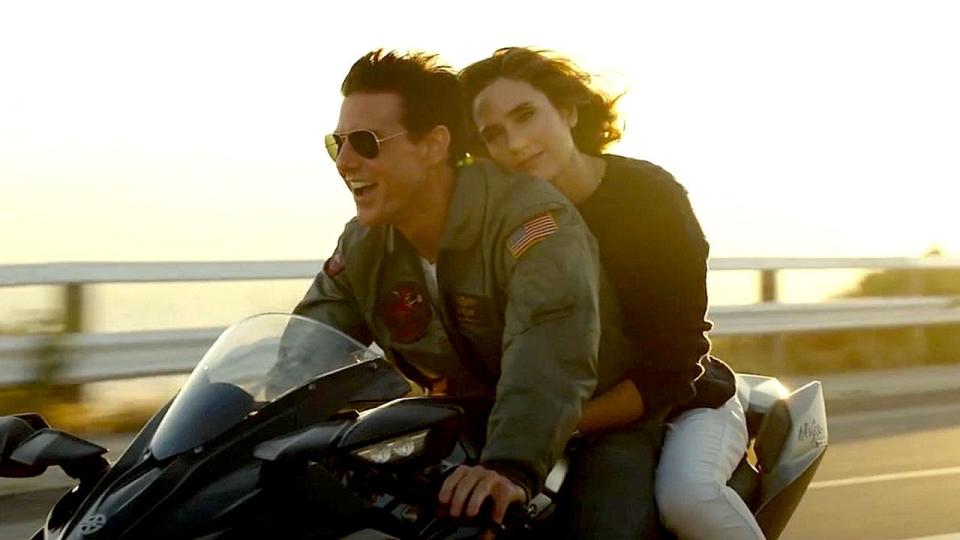
Paramount Pictures
7. Keep the faith that audiences will go to theaters.
The movie was held for two years and had four release dates during the pandemic. Cruise insisted on waiting for a return to theaters to release the picture. When “Maverick” finally opened on May 27, 2022, it opened big and kept on going for months, scoring slightly more overseas than domestic, for a running total of $1.5 billion worldwide, bested finally by James Cameron’s year-end juggernaut, “Avatar: The Way of Water,” which also scored a Best Picture Oscar nomination.
“It was the first picture for an older audience that brought people back to theaters and in droves around the world,” said Bruckheimer. “We showed the world that a movie can be a worldwide hit and still go on streaming to be number one on Labor Day on VOD. It set a record for streaming. It shows you can have good entertainment to watch in a theater and go home and watch it and buy it. Sales of the DVD were through the roof. You can’t tell how many people went to see the movie more than once. ‘Maverick’ captured the zeitgeist of the world. It’s not red state or blue state. It united everyone around the world.”
It’s all about escaping for two hours. “That’s Tom’s mantra,” said Bruckheimer. “You forget about everything and feel great when you walk out. That’s what we do. We showed the world what Hollywood can do when technicians and writers and actors do it right.”
Next up: Bruckheimer’s hoping for a theatrical release for Disney+ movie “Young Woman and the Sea,” which is set to star Daisy Ridley as Olympic Gold medalist Gertrude Ederle, who in 1926 became the first woman to swim 21 miles across the English Channel.
Best of IndieWire
Sign up for Indiewire's Newsletter. For the latest news, follow us on Facebook, Twitter, and Instagram.

